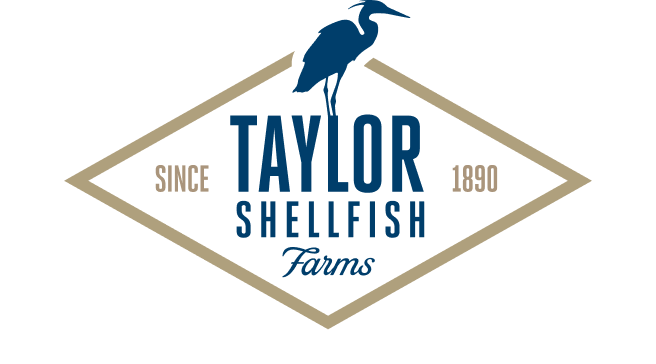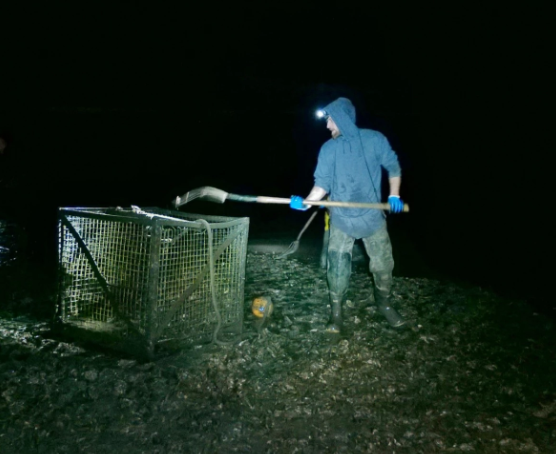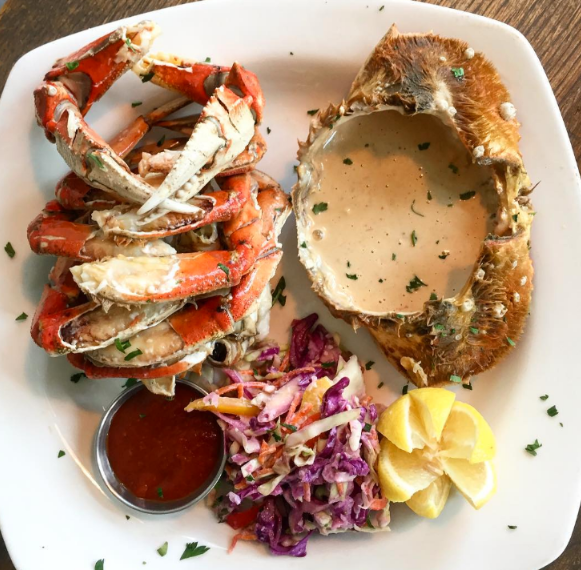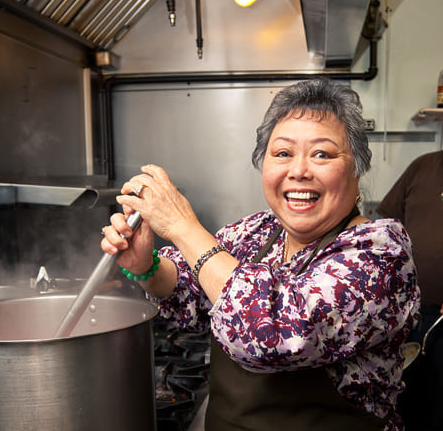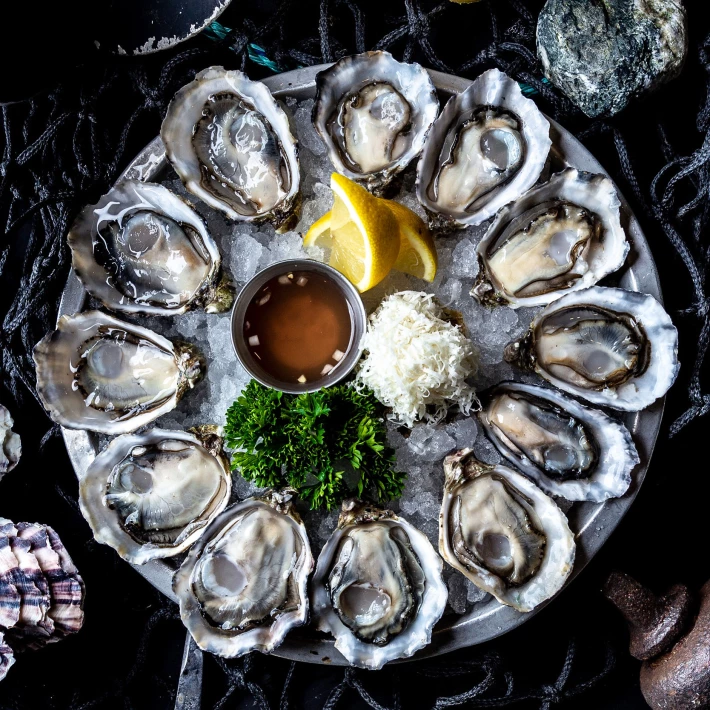In 1890, one year after Washington became a state, the Taylor family began farming shellfish on the tidal flats of Puget Sound. Over the ensuing century and a quarter, five generations followed in their muddy footsteps, and today, the great-great-grandchildren of those pioneering Taylors are hatching their own first: a movement they call tide to table.
The movement traces a path from the mud flats all the way to the Seattle-area restaurants owned by the Taylor family. Much like the farm-to-table movement that helped spawn it, tide to table answers a growing consumer desire to know where food originates (preferably somewhere local), who raises it, and how they raise it.
Tide to table relies on a mix of old and new business practices: time-tested stewardship of the raw materials that sustain the business; a new brand of product transparency demanded by discerning customers; and, for the Taylors, a keep-it-in-the-family ethos that has driven business success. At its core is a business practice that has shifted in and out of favor through the decades—the vertically integrated supply chain.
Controlled Expansion
Taylor Shellfish Farms is the largest producer of farmed shellfish in the United States and the only one to be certified as a responsible shellfish farmer by the Aquaculture Stewardship Council. The company employs more than 700 people across its 30 farms, processing plants, and restaurants.
Marcelle Taylor, the company’s marketing manager, and Nyle Taylor, its farm project coordinator, are sister and brother—members of the business’s fifth generation. Both are quick to note that the restaurant business is a small portion of Taylor Shellfish’s operations. The company earns more than 90 percent of its revenue from wholesaling—selling oysters, clams, geoducks, and other shellfish to more than 150 restaurants in the Seattle area, as well as eateries across the United States and the Pacific Rim. Still, the restaurants’ ability to boost the company’s brand exceeds their modest contribution to sales.
Taylor Shellfish’s restaurants—the endcap on the company’s integrated supply chain—first came into being about six years ago, but their story dates back further. A decade ago, the company wasn’t a household name in the Pacific Northwest restaurant industry, although it routinely sold its products to high-end restaurants in New York, Hong Kong, and beyond.
In the Northwest, the team was most visible at local farmers’ markets. Strong customer response there encouraged the Taylors to open a brick-and-mortar location in Seattle—not a restaurant but a retail store selling shellfish to the public. When store customers routinely asked the staff to shuck oysters for them, the idea for an oyster bar was born. Six years ago, the company opened its first restaurant in Seattle, followed by two more. A fourth will debut in Bellevue in late 2017.
As the company expanded, it kept control of each phase of the supply chain—each link in the shellfish’s journey from tide to table. Taylor Shellfish owns several seed hatchery facilities, as well as the land where it farms shellfish, multiple processing plants, two shellfish markets, and four restaurants—even the trucks used for local distribution.
The tide-to-table process flows along this vertically integrated supply chain. It begins with the raw materials of production—in this case, the brood stock of young clams, oysters, and other shellfish. In their early stage, the organisms—even the giant geoduck—can fit by the thousands in the palm of a human hand. Those seeds come from Taylor-run hatcheries and spend time growing in protected habitats before workers plant them in the mud beds of Puget Sound’s intertidal zone. After a period that varies by species—for example, geoducks need six years to mature—employees harvest the mollusks and move them to Taylor-owned processing plants. Once packaged, they are delivered on Taylor-owned trucks to the four oyster bars under the company’s control—and more than 150 other restaurants in the Seattle area.
A Vertically Integrated Supply Chain
Key to Taylor Shellfish’s tide-to-table operation is what some might call pride of ownership and others might call stubborn self-reliance. A similar tendency has driven companies like Apple and Tesla—and their visionaries Steve Jobs and Elon Musk—to innovate and maintain control over much of their supply chains. Apple writes much of its own software, designs the computer chips that run its products, and manages the retail stores that sell its wares, a 2016 Economist blog noted. “Tesla makes 80% of its electric cars and sells them directly to its customers.”
But the trend didn’t begin in Silicon Valley, nor in this millennium.
“A century ago this sort of vertical integration was the rule,” the Economist post explains. “In his 1926 book Today and Tomorrow, Henry Ford wrote that vertical integration was the key to his success: ‘If you want it done right, do it yourself.'”
In the decades following Mr. Ford’s heyday, the practice fell from favor. The world was flattening out; companies in low-cost regions began to win production contracts from corporations in high-cost regions, and executives spoke with growing enthusiasm about focusing on their company’s core competencies.
By the early 1990s, outsourcing had become so ingrained in the corporate playbook that a 1993 McKinsey Quarterly article advised, “Do not vertically integrate unless absolutely necessary. This strategy is too expensive, risky, and difficult to reverse.”
But business executives—and the management consultants who advise them—change with the tides. Today, vertical integration is once again in vogue. Tesla and Apple are just two of many leading companies with integrated supply chains. Zara, along with parent company Inditex, has become the most valuable apparel empire in the world through a pure integration strategy, handling its own manufacturing and retailing.
Meanwhile, Amazon has purchased airplanes, is rumored to be testing a delivery service to rival quondam partners FedEx and UPS, and has added brick-and-mortar retailing to its portfolio with a takeover of Whole Foods Market.
All these companies have embraced Ford’s advice to “do it yourself.” At Taylor Shellfish, the philosophy permeates the business.
“When the people that we were trying to buy boats from wouldn’t make certain changes because it was too much work,” says Marcelle Taylor, “we were like, ‘Fine, we’ll build our own boats.'” (And we’re not talking dinghies; Taylor Shellfish’s boats are 24 to 65 feet long and rugged. The company makes them in its own metal fabrication shop.)
That willingness to experiment has driven some big successes and some forgettable failures, according to Marcelle Taylor. “Like our shigoku oysters—they’re a success,” she says. “The bacon cheesy oysters were a fail.”
It’s a cornerstone principle for a company that’s creating a new twist on the farm-to-table movement.
Location Is Critical
Tide to table, like farm to table, thrives on a knowledge of pedigree, and pedigree is intimately tied to location. Just as wine drinkers consider terroir when judging a vintage, tide-to-table aficionados take note of merroir. Nyle Taylor explains: “Every area has differences in the algae and the salinity and temperatures of the water. Oysters from different areas—even the exact same species—taste different. In that sense, location is very important.”
To raise its shellfish effectively, the company has always leaned on the knowledge of generations past. Lately, it has begun to supplement that wisdom with modern tools of the trade. In 2016, the company implemented a geographic information system (GIS) that helps farm managers locate optimal places to grow shellfish on the company’s 30 farms. Geoducks, for example, grow best in deep sand near land formations called feeder bluffs. Using GIS-based location analysis, Taylor Shellfish’s managers can assess whether geoduck beds are in the right place and identify prime locations for new beds.
Taylor Shellfish is also expanding its use of GIS to better serve the “table” end of its tide-to-table movement: diners seeking information about their meal’s origin. Restaurant wait staff, for instance, will soon be able to show customers the chain of events leading to the dinner plate. “We can take them on a virtual beach tour to help them understand what it takes to go from tide to table,” Nyle Taylor explains.
To strengthen supply chain transparency, farm managers will soon begin tracking individual shellfish batches via GIS, allowing the company to see where they are throughout their life cycle. That will help managers understand where the best product is being grown and help diners learn more about their favorite oysters.
The process is more complicated than most people realize, according to Nyle Taylor. “A lot of our [shellfish] will be moved several times around the tide. You put them in the best area for higher survival when they’re small, then put them [where] they grow faster and get really fat meat when they’re older and can protect themselves better.”
GIS will track it all, he says, delivering the kind of location intelligence and analytics that help the company improve yield. At the far end of the life cycle, it will deliver transparency to restaurant goers.
“We have 20- or 30-plus growing regions for our Pacific oyster,” Marcelle Taylor says, “so if we can show exactly where that Pacific oyster came from, it’s a great story to tell our customers.”
Feeding a Trend
These new tools of the trade will help the Taylor team fulfill a common request by diners—not just merroir puritans—to know the lineage of their food. Some observers have suggested that this quest for transparency can be overdone. Who didn’t laugh at the Portlandia episode in which farm-to-table diners learn that their chicken was named Colin, and that Colin was raised on locally grown hazelnuts?
But no one is laughing at the evidence driving the trend.
Studies have shown that Millennials—a generation with growing spending power—pay more attention to food than do other generations. Half describe themselves as foodies, and parents aged 18 to 34 are now the biggest consumers of organic food in the United States. They’re also spending more in restaurants, devoting 44 percent of their food dollars($2,921 per year) to eating out.
Hartman Group, an analyst firm that covers the food and beverage industry, says transparency is “paramount” when appealing to Millennial buyers, according to a 2016 Forbes article. Yet while transparency is coveted, it isn’t always easy to find in a food distribution network “where ingredients can bounce along a chain from farmer to manufacturer to distributor to retailer, sometimes with additional steps in between,” the article noted.
At Taylor Shellfish, a vertically integrated supply chain—combined with the location intelligence of GIS and story maps—provides the tide-to-table visibility that diners desire.
Meanwhile, the family’s experimental streak continues to fuel business efficiency. Nyle Taylor and team have begun using a drone to map farm beds, combining that imagery with location analytics to see exactly where the company can responsibly expand operations and drive growth.
And so the innovation, like the tide, carries on across the generations, bringing moments of opportunity and reinvention.
[Nyle Taylor explains more about the company’s digital transformation in this podcast.]
Article courtesy ESRI, written by Cindy Elliot
